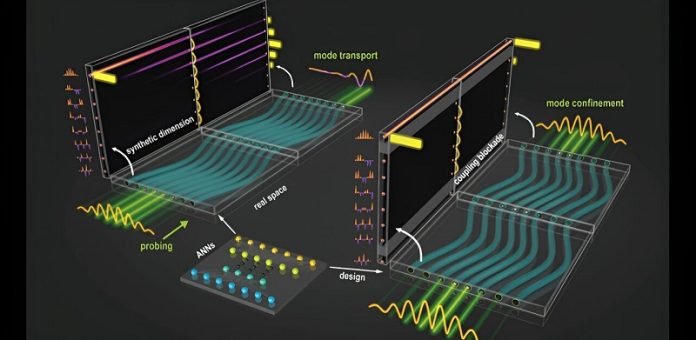
In a fascinating leap forward for physics, scientists are exploring a concept called “synthetic dimensions” (SDs) to better understand and manipulate light.
This innovative approach steps beyond our usual three-dimensional world into realms where the rules of physics play out in ways we’ve never seen before.
Synthetic dimensions allow researchers to investigate complex physics phenomena that are otherwise hard to study in our standard three-dimensional space.
This is especially exciting for the field of photonics, where understanding light’s behavior in higher dimensions could lead to groundbreaking technologies.
Traditional challenges in photonics involve creating complex structures for light to travel through, which can be difficult to achieve.
However, synthetic dimensions offer a creative workaround.
By treating properties of light—like its frequency or the way it spins—as if they were physical dimensions, scientists can design intricate pathways for light without needing to physically construct them.
Imagine a world where we can direct light in any direction we want, just like we route traffic in a city.
This could transform how we send information, harness energy, or even create lasers. A group of international researchers has brought us closer to this reality.
They’ve figured out how to manipulate light paths using something called waveguide arrays, essentially creating custom mazes for light to follow.
The key to their success? Artificial neural networks (ANNs), which are smart algorithms trained to solve complex problems.
These ANNs help design the waveguide arrays so that light moves in precise, pre-planned patterns.
One of their impressive feats was creating a special kind of pathway, known as the Su-Schrieffer-Heeger (SSH) lattice, allowing them to control light in new and exciting ways.
This breakthrough, reported in the journal Advanced Photonics, doesn’t just mean cooler light shows.
It opens the door to faster and more efficient ways to transmit data, improved energy collection methods, and more powerful and precise lasers.
Professor Zhigang Chen from Nankai University and Professor Hrvoje Buljan from the University of Zagreb, who are leading this research, believe that these advancements in controlling light could lead to new materials and devices previously thought impossible.
The fusion of topological photonics (the study of light’s properties) with synthetic dimensions, all made possible by ANNs, hints at a future where the boundaries of physics as we know them are pushed further than ever before.



